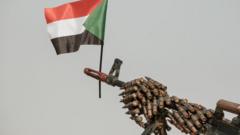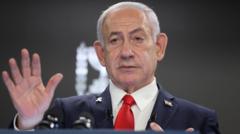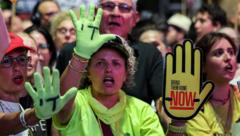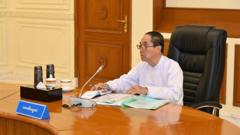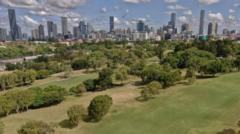The city of Idlib, previously a battleground in Syria’s civil war, reflects a complex reality under the control of the Islamist group Hayat Tahrir al-Sham (HTS). With improvements in infrastructure and basic services, residents express cautious optimism about governance while grappling with fears over authoritarianism and the treatment of minority groups.
The Complex Reality of Idlib: Governance in a Post-Assad Syria
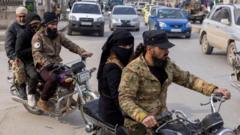
The Complex Reality of Idlib: Governance in a Post-Assad Syria
In the wake of Bashar al-Assad's removal, Idlib's transformation under Hayat Tahrir al-Sham reveals both progress and underlying tensions as the region faces its future.
The journey to Idlib, located in the north-west of Syria, reveals a history marked by conflict, with remnants of war visible in trenches, abandoned military outposts, and remnants of munitions. Until recently, this region was the last bastion of opposition forces. Following the dramatic ousting of Bashar al-Assad, the Islamist group Hayat Tahrir al-Sham (HTS) has emerged as the region's authority, reshaping the local governance model and aspirations for broader Syrian rule.
In Idlib’s heart, public displays of unity resonate through flag-waving gatherings, as the city buzzes with a mix of renewed hope and echoes of struggle. Graffiti, a sign of resilience, adorns the walls, reflecting the spirit of defiance against Assad’s regime. Although the aesthetic scars of war linger, evidence of revitalization emerges in renovated homes, bustling markets, and functional public infrastructure, including working lamps and well-paved streets.
Dr. Hamza Almoraweh, a cardiologist who relocated from Aleppo, notes significant development in Idlib since HTS's ascension to power. His observations underscore a transformed public landscape, with services and activities that were previously absent under Assad's rule. However, HTS's history as a former al-Qaeda affiliate complicates its current nationalistic portrayal, with persistent concerns over its classification as a terrorist entity by various international stakeholders, including the US and Turkey.
Over the years, HTS has adjusted its narrative, moderating its stance to appeal for international legitimacy while attempting to manage local discontent. Some residents commend HTS for easing restrictive social measures, allowing more freedom in daily life, while also acknowledging recent protests against government-imposed taxes as signs of growing civic engagement.
The reality, however, is nuanced. Activist Fuad Sayedissa, originally from Idlib and now residing in Turkey, remarked on HTS’s attempts to foster openness but cautioned against potential authoritarian drift. The group has suppressed extremism and consolidated power through controversial means, heightening anxieties regarding its rule across diverse Syrian demographics.
Just an hour away in Quniyah, a Christian village, our conversations revealed mixed sentiments. The local Friar, Fadi Azar, expressed cautious gratitude for the new autonomy his community experiences under HTS's governance, contrasting it with the past. Yet, questions linger regarding the sincerity of the group's outreach and its long-term intentions towards Syria's varied ethnic and religious landscape.
Sayedissa captured the essence of the intriguing yet precarious environment post-Assad, emphasizing that the people’s readiness to defend their newfound freedoms serves as both a warning and a beacon of hope for the future. Residents are hesitant to openly criticize HTS for fear of reprisal, but there exists an underlying commitment to resisting any form of dictatorship.
With a continued struggle for identity and governance in a volatile context, the fate of Idlib encapsulates larger questions concerning Syria's trajectory, unity, and the resilience of its people amidst the shadows of their past.

